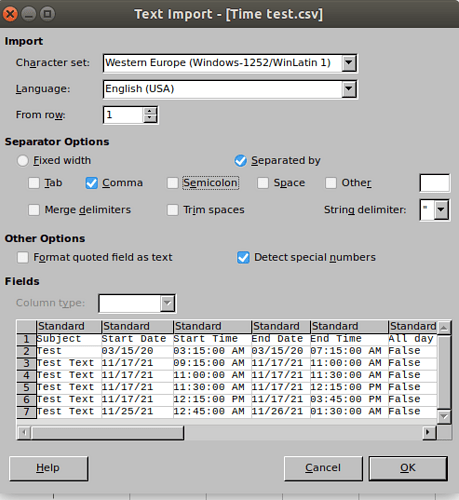Hi LibreOffice,
DATE FORMATS
Firstly:
In the Date Format dropdown box there are date formats “31. Dec. 1999” and “31. December 1999”. Let this be my formal stern protest against these frustrating entries. Those full stops do not belong there in my locale, and they prevent me from using universally standard formats.
DATE REPLACING
-
I am in South Africa, locale set to South Africa, where we place the month portion of a date in centre of 3 and 4-component date formats, viz. dmy ; ymd ; ddd, d mmm y
-
In my Calc Workbook, 12 of my columns are labelled to be the value of the 1st of each month, from March this year to February next year, formatted to display these values in the format “mmm yyyy”, so user sees Mar 2024, Apr 2024, May 2024, et cetera, up to Feb 2025.
-
That’s my Financial Year 2025 Workbook. Now I’ve saved it as my 2026 workbook, and I did a search replace on VALUES, of 2025 to 2026, then 2024 to 2025. I am expecting the results to return columns headed Mar 2025, Apr 2025, May 2025, et cetera, up to Feb 2026, but not so. It has caused ten columns labelled Jan 2025 and then two labelled Jan 2026.
-
Whatever the format of my cells might be, viewing the value presents an Amerigocentric date value, viz. mm/dd/yyyy, and I am somewhat troubled by the opting of displaying a non-universal format in the cell. And it’s not very robust, because the software is getting confused between the date-value content of cells and the formatted appearance. I often have to re-type a cell date value in the international format yyyy-mm-dd to re-ascertain that it’s value is intended to be, for instance, the 1st of October not the 10th of January. This is not a permanent solution and it keeps biting me in the bum now and then.
I suspect that the software is fighting with itself over the above and I look forward to the day when I no longer have to wrestle with these nuances.
Thank you for your time and efforts.
JJHJ


